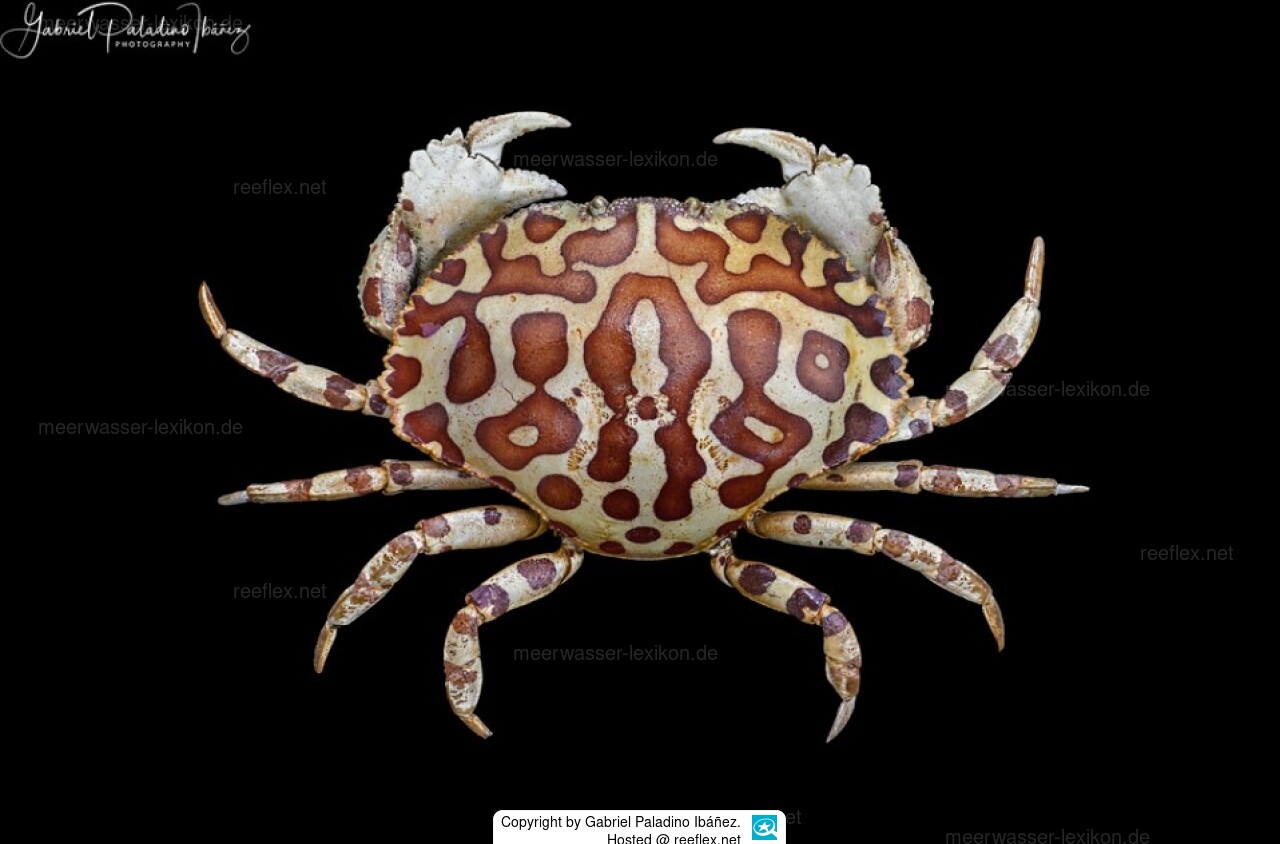Info
Hepatus epheliticus (Linnaeus, 1763)
Hepatus epheliticus, (not to be confused with Ovalipes ocellatus) lives in the shallow waters of the western Atlantic from the Chesapeake Bay to the Dominican Republic. The crab has a 76 mm wide shell. The carapace is covered with large red spots that may combine to form lines or other patterns. The spots are outlined with a darker color. On some crabs only the darker rings are visible.
The crab lives at depths of up to 46 m on sandy and muddy bottoms. It often carries the anemone Calliactis tricolor on its shell or lies buried in the sand with only its eyes sticking out.
Reproduction takes place in summer. The eggs are carried by the female until they hatch. There are five planktonic zoea stages.
Hepatus epheliticus was first described under the name Cancer epheliticus by Carl Linnaeus in his 1763 work Centuria Insectorum, based on specimens from Carolina sent to him by Alexander Garden.
Synonymised names
Cancer decorus Herbst, 1803 · unaccepted > junior subjective synonym
Cancer epheliticus Linnaeus, 1763 · unaccepted > superseded combination
Hepatus vanbenedenii Herklots, 1852 · unaccepted > junior subjective synonym
Hepatus epheliticus, (not to be confused with Ovalipes ocellatus) lives in the shallow waters of the western Atlantic from the Chesapeake Bay to the Dominican Republic. The crab has a 76 mm wide shell. The carapace is covered with large red spots that may combine to form lines or other patterns. The spots are outlined with a darker color. On some crabs only the darker rings are visible.
The crab lives at depths of up to 46 m on sandy and muddy bottoms. It often carries the anemone Calliactis tricolor on its shell or lies buried in the sand with only its eyes sticking out.
Reproduction takes place in summer. The eggs are carried by the female until they hatch. There are five planktonic zoea stages.
Hepatus epheliticus was first described under the name Cancer epheliticus by Carl Linnaeus in his 1763 work Centuria Insectorum, based on specimens from Carolina sent to him by Alexander Garden.
Synonymised names
Cancer decorus Herbst, 1803 · unaccepted > junior subjective synonym
Cancer epheliticus Linnaeus, 1763 · unaccepted > superseded combination
Hepatus vanbenedenii Herklots, 1852 · unaccepted > junior subjective synonym







 Gabriel Paladino Ibáñez, Uruguay
Gabriel Paladino Ibáñez, Uruguay


